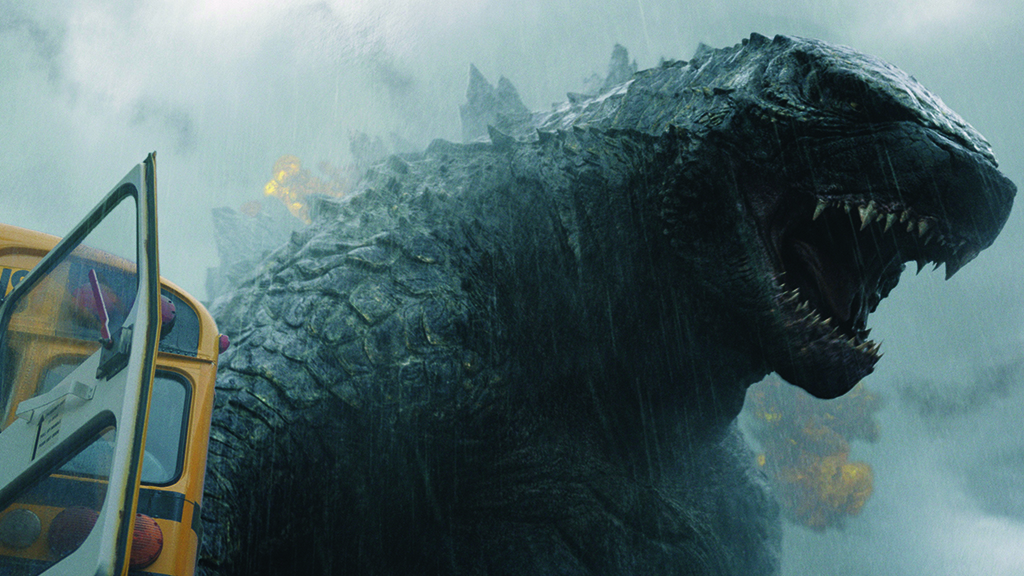Why Classic Monsters Are on a TV Rampage
In uncertain times, viewers tune in for familiar escapist fare

Bigger-than-life classic movie monsters such as Godzilla, Gamera and King Kong are once again leaving a big footprint on the media landscape in the form of original series for a new generation of fans.
Apple TV Plus’s Monarch: Legacy of Monsters is the latest project to feature scary beasts who first thrilled audiences in the 1930s, ’40s and ’50s as threats to humanity due to their massive size and destructive power. Much as in their theatrical heyday — when society was recovering from the Great Depression, the devastation of World War II and, later, fears of nuclear annihilation — shows like Monarch and Netflix’s animated series Skull Island and Gamera Rebirth are gaining popularity with viewers looking to be entertained in the midst of uncertainty, observers said.
“One of the reasons why these monsters have such a lasting impact is they are borne out of a tragedy and a fear of the future, and right now it seems like with the shape of the world, it feels like there’s quite a bit to contemplate,” science fiction author and journalist Richard Newby said. “I feel like a lot of these monsters work really well as allegories.”
Giant monsters have stomped their way onto TV screens in recent years in shows such as Netflix’s Emmy-winning Stranger Things, HBO’s House of the Dragon and MGM Plus horror series From. But unlike those shows, Monarch: Legacy of Monsters, Gamera Rebirth and Skull Island feature creatures with name recognition forged from the classic Japanese-produced movies popular at the dawn of television.
Monarch: Legacy of Monsters, which follows the descendants of a covert organization created to monitor giant monsters, is a direct spinoff from Legendary Entertainment’s 2014 Godzilla theatrical film, part of its “MonsterVerse” franchise. Along with Godzilla, three other films in the series — Kong: Skull Island (2017), Godzilla: King of Monsters (2019) and Godzilla vs. Kong (2021) — have grossed nearly $2 billion in global box office.
While the movies have served up plenty of action and epic monster battles tailor-made for the big screen, Monarch delves more into how people are adjusting to the reality that monsters exist, executive producer Tory Tunnell said.
“The movies have done what they’ve done so well in delivering on those epic monster battles,” Tunnell said. “What we’re looking at are the characters behind those battles and what was happening within the world during this time. We look at our show as our September 12 moment in declaring that monsters are real, so the show allows viewers to have escapist fun. But we also recognize a changed world that we’ve all gone through with COVID and other things that are relevant to humans.”
Multichannel Newsletter
The smarter way to stay on top of the multichannel video marketplace. Sign up below.
Finding New Monster Fans
Newby, author of the science fiction book We Make Monsters, also said the shows let the producers and programmers introduce the classic monsters to a new audience that may not be familiar with the old movies, or who aren’t going to the theaters to watch the new films.
“I think it’s easier to introduce new audiences to the characters through a TV show rather than dozens of movies,” he said. “Especially today, I feel like it’s a bit difficult to convince someone to watch 36 Godzilla movies unless you’re really invested in it.”
Monarch: Legacy of Monsters roared out of the gate for Apple TV Plus. Its November 17 premiere was the most-watched series in TVision’s Power Score ranking of shows on connected TV services for the week of November 13-19.
Also extending Legendary’s “MonsterVerse” to television is Netflix’s Skull Island, where a group of shipwrecked travelers encounters King Kong and other giant monsters on a mysterious island. Netflix also tapped the international market to secure rights to the Japanese-produced animated series Gamera Rebirth, which resurrects the fire-breathing prehistoric amphibian first seen in the 1965 black-and-white film Gamera, the Giant Monster and in several subsequent movies through the 1990s.
Classic monsters also touched the free, ad-supported streaming TV (FAST) space this summer, when Pluto TV launched a 24-hour Godzilla channel. It featured classic Godzilla films (more than 27 at launch) from the 1950s through the early 2000s.
Godzilla remains a draw on the big screen. Godzilla Minus One earlier this month set an opening weekend record for a live-action Japanese release in North America with $11 million in box office. A fifth Legendary “MonsterVerse” movie, Godzilla vs. Kong: The New Empire, is set to debut in the first quarter of 2024.
More monster mayhem is also slated for the small screen. An FX series prequel to the 1979 horror film Alien is planned to debut in 2025, with Noah Hawley, producer of the series Fargo, fronting the project.
R. Thomas Umstead serves as senior content producer, programming for Multichannel News, Broadcasting + Cable and Next TV. During his more than 30-year career as a print and online journalist, Umstead has written articles on a variety of subjects ranging from TV technology, marketing and sports production to content distribution and development. He has provided expert commentary on television issues and trends for such TV, print, radio and streaming outlets as Fox News, CNBC, the Today show, USA Today, The New York Times and National Public Radio. Umstead has also filmed, produced and edited more than 100 original video interviews, profiles and news reports featuring key cable television executives as well as entertainers and celebrity personalities.

